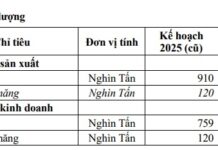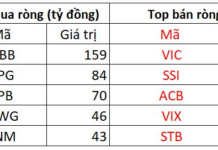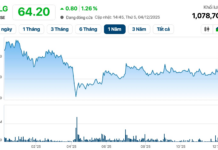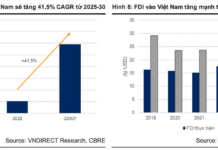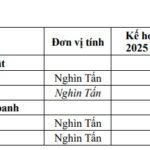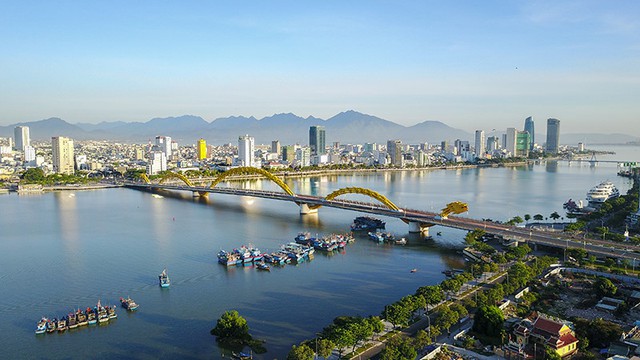
According to data from the International Monetary Fund (IMF), in 1991, Vietnam’s GDP per capita (PPP) was lower than the Philippines ($2705.7) and Indonesia ($3828.19). Therefore, Vietnam’s GDP per capita (PPP) was less than half of the Philippines and one-third of Indonesia.
During the period 1991 – 2011, Vietnam’s GDP per capita (PPP) was continuously lower than the Philippines and Indonesia. However, in 2012, Vietnam’s GDP per capita (PPP) surpassed the Philippines. In 2012, Vietnam’s GDP per capita (PPP) reached approximately $6,400, while the Philippines reached approximately $6360. Therefore, Vietnam’s GDP per capita (PPP) officially surpassed the Philippines after 21 years since 1991.
By 2023, Vietnam’s GDP per capita (PPP) still ranked above the Philippines but was still lower than Indonesia. Specifically, Vietnam’s GDP per capita (PPP) reached approximately $14,342.3, while the Philippines reached approximately $11,339 and Indonesia reached approximately $15,828.
However, according to IMF forecasts, by 2029, Vietnam’s GDP per capita (PPP) will approach Indonesia. In 2029, Vietnam’s GDP per capita (PPP) is forecasted to reach approximately $22,410, while Indonesia’s is forecasted to reach approximately $22,706. Therefore, although Vietnam’s GDP per capita (PPP) was once less than one-third of Indonesia and has not yet surpassed it, it will come close in 2029.
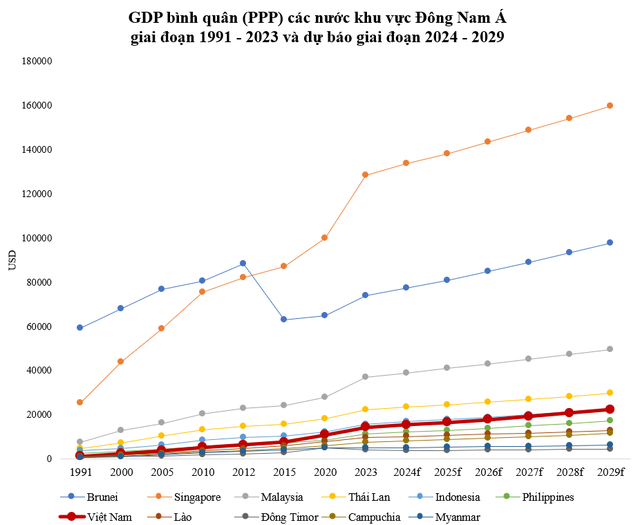
GDP per capita (PPP) of Southeast Asian countries from 1991 -2023 and projected from 2024 – 2029. Source: IMF.
Regarding all countries in the Southeast Asian region, Vietnam’s GDP per capita (PPP) has changed significantly from 1991 to 2023.
In 2023, Vietnam’s GDP per capita (PPP) ranked 6th out of 11 in the Southeast Asian region. Accordingly, Singapore, Brunei, Malaysia, Thailand, and Indonesia still rank higher than Vietnam. Singapore, Brunei, Malaysia, Thailand, and Indonesia’s GDP per capita (PPP) are currently 9 times, 5 times, 2.6 times, 1.6 times, and 1.1 times higher than Vietnam’s GDP per capita (PPP), respectively.
After 32 years of development efforts, Vietnam’s GDP per capita (PPP) has increased from $1236.5 in 1991 to $14,342.3 in 2023.
From 1991 to 2023, Vietnam’s GDP per capita (PPP) had the highest growth rate in the Southeast Asian region (an 11.6-fold increase). Other countries have also improved but at a slower pace, such as: Cambodia (9.6-fold increase), Laos (8.9-fold increase), Myanmar (over 7.74-fold increase), Singapore (5.02-fold increase), Malaysia (4.84-fold increase), Thailand (4.73-fold increase), East Timor (4.5-fold increase), Philippines (4.2-fold increase), Indonesia (4.13-fold increase), and Brunei (1.25-fold increase).
According to the Resolution of the Central Committee, by 2030, Vietnam will basically meet the criteria of an industrialized country, including being a developing country with a modern industrial sector and a high middle-income level.
According to the Resolution, the Government aims to achieve the targets and complete the key tasks of the National Master Plan to 2030; in which, economically, striving for an average GDP growth rate of approximately 7.0% per year during the period 2021 – 2030.
By 2030, GDP per capita at current prices will reach approximately $7,500. The proportion of the service sector in GDP will reach 50%, the industrial – construction sector will be over 40%, and the agriculture, forestry, and fishery sector will be less than 10%.
The average labor productivity growth rate will reach over 6.5% per year. The contribution of Total Factor Productivity (TFP) to growth will reach over 50%.
Developing sustainable urban areas in a network; the urbanization rate will reach over 50%; strive for 3 – 5 cities at the regional and international level. Building new rural areas. comprehensively, sustainably, and in conjunction with urbanization; the proportion of communes meeting new rural standards will reach over 90%, of which 50% of communes will meet enhanced new rural standards.
Strongly developing digital infrastructure, data infrastructure to create a foundation for national digital transformation, developing a digital government, digital economy, and digital society; the proportion of the digital economy will reach approximately 30% of GDP.
Regarding infrastructure development, the basic national infrastructure framework will be formed, including the North-South road transport axes (North-South Expressway, sections of the North-South Expressway, coastal road), important East-West transport axes, striving for approximately 5,000 km of expressways.











